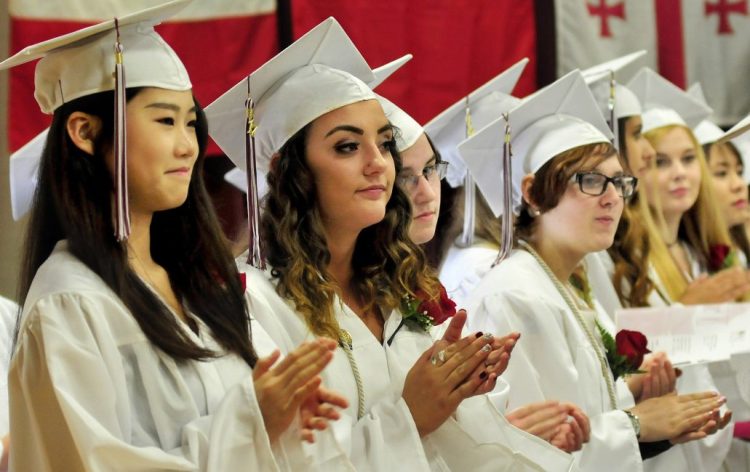An American industry is losing jobs overseas, and it’ll take more than a tariff to stop it.
After a decade of growth, the number of foreign students in the U.S. has fallen the last two years, forcing schools to cut programs and positions to make up for the lost revenue. Competition, cost and Trump-era immigration policies are all at fault, experts say, for the damage to one of the United States’ biggest exports – education, which accounts for $39 billion a year in direct spending.
And that doesn’t account for what is lost in American prestige and influence when students around the world stop seeing the U.S. as the place they have to be, and look instead to pursue their schooling in other countries.
The U.S. remains the leader in attracting international students, but we should not take that for granted. We once housed half of all international students; now, we account for about a quarter.
After growing for about a decade, the number of F-1 international student visas supplied by the State Department peaked in 2015 at more than 600,000. The number fell to 471,728 the next year, and to 393,573 last year.
A change in how visas are distributed to Chinese students accounts for part of the cut. There is also increased competition from schools in Canada, Germany, Australia and elsewhere, and the high cost of education here.
But there are also the policies and posture of President Trump.
Schools across the country report that prospective students are worried that their visa applications will be delayed or rejected for little reason, or that they won’t be able to stay in the country after graduation.
And after the president insulted Mexicans, enacted a travel ban on a series of Muslim-majority countries and used variations on the slur “hole” to describe other nations, foreign students are worried they won’t be accepted here.
As a result, the number of new foreign students was down 3 percent last year, and that number is expected to double this year.
Maine hasn’t been immune. For the last decade or so, independent and private town academies hurt by lower enrollment, such as Maine Central Institute in Pittsfield, have heavily recruited overseas. Those students have brought new life to those campuses, both through the tuition they pay and the new perspective they bring to small-town Maine.
But the number of foreign students is falling, down 6 percent the last two years for many of the same reasons seen at colleges.
And just as in higher education, foreign students pay full tuition, in effect subsidizing the education of American students. Without them, schools like MCI are unable to offer the same course of study.
This is not a road we want to go down. Besides the tuition they pay and the money they otherwise inject into the American economy, foreign students bring talent and potential to American schools.
President Trump has done uncalculable damage to this dynamic, and he may do more. He has suggested that Chinese students, who make up nearly one-third of foreign students, are a national security risk because of threats to intellectual property, and he may restrict their visas.
But there are better ways to defend against intellectual property theft than to restrict visas, just like there are better ways to secure the country than to shut down our borders.
The United States should be seen around the world as a place of learning and opportunity. If it’s not, then somewhere else will be.
Send questions/comments to the editors.



Comments are no longer available on this story